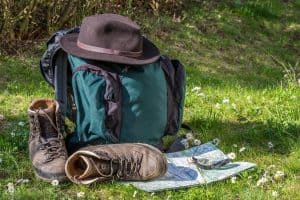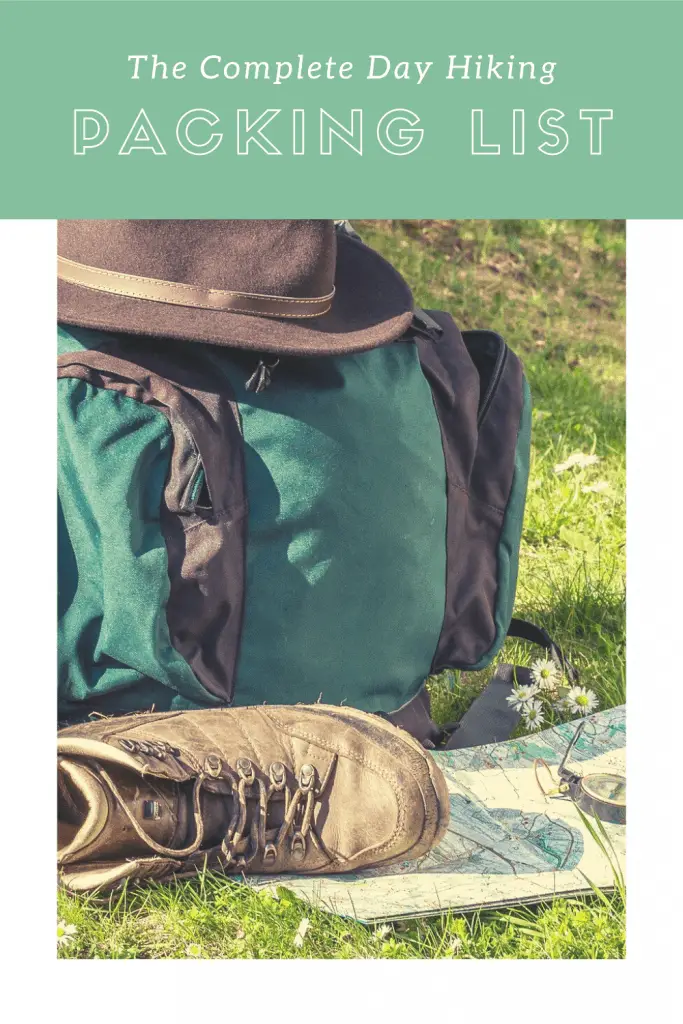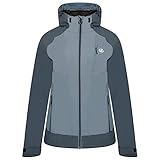Last Updated on 10/10/2025 by Louise
Spending time in the outdoors is good for our physical and mental health and nothing beats a good day in the mountains. But what hiking gear do you need for a safe adventure in the mountains?
I was born and raised on the edge of the Brecon Beacons National Park and spend most of my time hiking the great outdoors. I thought I was quite thorough about what I took into the hills, but after completing my Mountain Leader training several years ago I realised I’d become a bit blasé about my hiking gear.
There are some items that are absolutely essential for a day hike and others that will just make your life a little more comfortable. So I decided to put together a complete summer day hiking packing list that will ensure you don’t leave home without the items you need.

Disclaimer: Some links in this article are affiliate links, which means that if you purchase through them I receive a small commission, at no extra cost or price difference to you. This helps cover the cost of running this blog and keeps all resources free to access 🙂
10 Day Hiking Essentials
Here are the absolute must-have hiking necessities for a day of Summer hiking. These 10 items are generally agreed by all in the hiking community to be everything you need to survive. These items permanently sit in my day hiking rucksack.
- A physical map and compass (and knowing how to use them!)
- Basic First Aid Kit (including emergency blanket/bivvy bag and whistle)
- Extra layers (hat, rain jacket, fleece or puffy)
- Sun protection (sunscreen, hat, sunglasses)
- Torch or head torch (with batteries that work!)
- Emergency Food
- Water
- Multitool
- Matches or lighter
- Mobile phone (ideally with a power bank)

Hiking Equipment Packing List
In the following day hike packing list I get into the nitty gritty of your hiking equipment. I point out qualities to look for when choosing your gear, why you might need them and put everything into a handy checklist at the end.
Day Hiking Backpack
For day hiking in the summer, a rucksack up to 40 litres in capacity should be sufficient to fit in everything you need. Try not to get a bigger pack because if you’re anything like me, you’ll just fill it up with unnecessary stuff which will ultimately weigh you down! Personally I use a 30 litre bag which has plenty of room.
Be sure to choose a pack which fits you comfortably and is well ventilated to avoid getting a sweaty back. Ideally pick one with a waterproof cover or alternatively, buy a cover that fits over the top and pack it inside. I use a hiking backpack that is specific to carrying a camera but Nick uses this Lowe Alpine bag which he loves because of the back ventilation system.
Water Bottle or Bladder
Staying hydrated is essential so make sure you have plenty of water for the day plus a little extra. Water bladders are useful for ensuring you stay hydrated, since they encourage you to sip water consistently.
Filtered water bottles are extremely useful since they can be topped up in mountain streams or rivers and this is what I prefer to use. I use the Water-to-go Active bottle which you can pick up here.
For a guide to choosing the best filtered water bottle for hiking, take a look at this post.
 First Aid Kit
First Aid Kit
You can pick up hiking specific first aid kits which include most of the things you need. Add to it, pain killers, antihistamines and blister pads (second skin).
As part of the pack, include an emergency blanket or bivvy bag and a whistle.
Trekking Poles
These can be pretty handy at times and are effective at taking the load out of tired legs (and knees). In fact they reduce load on the legs by 20% so if you have knee issues I’d definitely recommend them.
Choose hiking poles that are lightweight, adjustable and have a comfortable handle. Poles that collapse are useful for carrying when they aren’t required. For example, I mostly use my poles for downhills and keep them stacked away on the uphills so my hands are free to take photos.
Sunscreen
Choose pocket sized sunscreen which is kind to the environment, like this one.
Watch
Watches can be pretty sophisticated these days but they’re still just really handy for knowing how much daytime you have left. I use this Suunto Core watch to keep tabs on my altitude and also have the storm warning feature turned on so I never get caught out. It’s also good for checking sunrise and sunset times in areas where I lack phone signal, which happens quite a lot in Wales!
Torch
Even if you know what time the sun sets you might still get caught out if something doesn’t go to plan. Head torches come in handy during these times. I regularly use my Petzl head torch on sunrise or sunset specific hikes.
Power bank and leads
I use my mobile for various things whilst hiking but usually for taking photos or videos. It’s a useful supplement for navigating also. So a power bank is handy to take along as long as it’s not too heavy.
I use this Anker Powercore which provides multiple charges and weighs under 250g.
Iniu also have a range of compact Power banks.
Hand Sanitiser
Does anyone leave home without hand sanitiser these days? These refillable bottles come with a nifty case.
Toilet Paper
Toilet paper is a must for your hiking pack list, just in case you get caught short. Don’t forget a bag to stash it in afterwards. Leave no trace people!

Read Next
- The Ultimate Car Camping Packing List
- The Best Filtering Water Bottle For Hiking
- Top hiking apps for use in the UK – many are free!
Footwear
Sturdy boots are an essential hiking item for a comfortable day in the mountains. For UK hiking they should be waterproof and breathable to allow for the changeable weather.
Ensure the boots fit correctly and are well worn-in to avoid blisters or sore feet. I recommend going to an outdoor shop to get your boots correctly fitted by an expert. Personally, I use these Hanwag boots and they’ve taken me on hikes all around the world, from Nepal and Pakistan to Montenegro and the UK.
Wear thinner socks in the Summer to avoid overheating.
Clothing
Base Layers
The best clothing for hiking are materials that are high wicking, meaning they remove sweat away from your body. Cotton t-shirts absorb sweat becoming wet and heavy and are a big no no. Instead pick up a trekking or running specific top.
I always carry a mid-layer too, for when it’s not quite hot enough for a t-shirt but a hoodie would be too much.
Choose hiking trousers or leggings that are light and quick drying – jeans are also a big no no! My favourite summer hiking pants are the Freeflex Move womeans pants by Kuhl. They’re very quick drying and wick away sweat with ease. They’re also super lightweight and stretchy so I don’t feel restricted in anyway.
On colder Summer, Autumn or Spring days, I love my Melodic II trekking pants by Dare2B. They’re stretchy so have a comfortable but flattering fit and are water resistant so shed water from light showers when waterproofs aren’t needed.
Waterproof Jacket and Trousers
A waterproof jacket is essential for those unpredictable summer showers. If you get wet you’ll get cold pretty quick and this can have disastrous consequences. I have a selection of waterproof jackets depending on the season. For days with serious downpours I opt for my Mountain Equipment Jacket but for lighter days I have my Dare2B Veritas Jacket.
Some more specialist hiking trousers are also waterproof, otherwise pack a light pair of waterproof trousers which can be quickly thrown on over the top.
Top Tip: Get waterproof trousers with zips on the outside so they can be thrown on quickly without having to take your boots off.
Warm Jacket or Fleece
Mountain peaks are often much cooler, especially after you’ve been sweating your ass off to get to the top of it! So to avoid getting cold, pack a fleece or puffy jacket. No matter what the weather, I never hike without my puffy (insulator jacket)!
Hat and gloves
In the summer I always wear a baseball cap to keep the sun off but I often take a lightweight beanie on cooler days to keep me warm on the summits.
Whilst I rarely hike in gloves, even in the winter, I always carry a pair in case of emergency.
Sport Bra
A good fitting sports bra is as essential as anything else on this list. At least for us ladies.
Spare Socks
Nobody wants wet feet. Wet feet can make your time in the mountains seriously miserable so pack a spare pair, just in case.
Day Hike Checklist
- Rucksack
- Water bottle(s)
- First Aid Kit
- Trekking poles
- Sunscreen
- Watch
- Torch
- Power bank
- Hand sanitiser
- Toilet paper
- Boots or hiking trainers
- Base layer
- Waterproof jacket and trousers
- Fleece or puffy jacket
- Hat and gloves
- Spare socks and layers
- Compass and map
- Food (including extra for emergency)
- Lighter or matches (in waterproof container)
- Water
- Multitool
- Mobile phone
Optional Hiking Gear List
These items aren’t essential but you might want to include them in your day hiking packing list.
- Camera – this is actually essential for me! For a photography specific day hiking packing list, take a look at this post.
- GPS or GPS mobile app to supplement the map – maps.me has offline topographic maps
- Binoculars
- Throw up Shelter – hopefully you’ll never have to use it in an emergency, but these are really handy for lunch breaks on rainy days!
Like it? Pin it for Later!

Join my Newsletter today and receive 10% off any photography print!













